It’s Still Too Early for the Enphase Battery
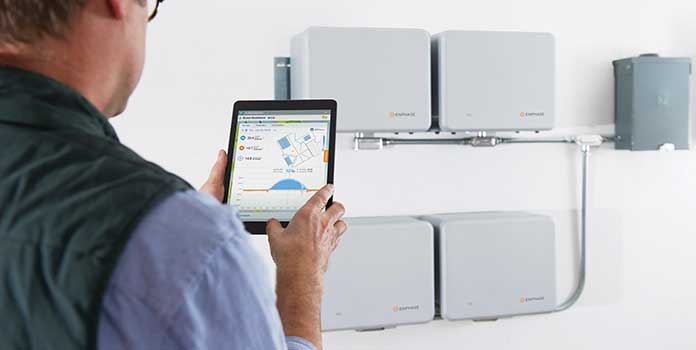
A small AC battery that’s easy to install sounds great, but is it cost-effective?
Enphase promises that their new AC battery sees the lowest upfront cost and best overall value of any energy storage system. On top of that, they market the battery as cost-effective, easy to install, and safe, with the whole system able to be set up in less than 2 hours.
But how exactly does their AC battery system work, and does that low purchase price hold up when compared to simply purchasing utility electricity? Let’s break it all down together right now.
Enphase Battery Basics
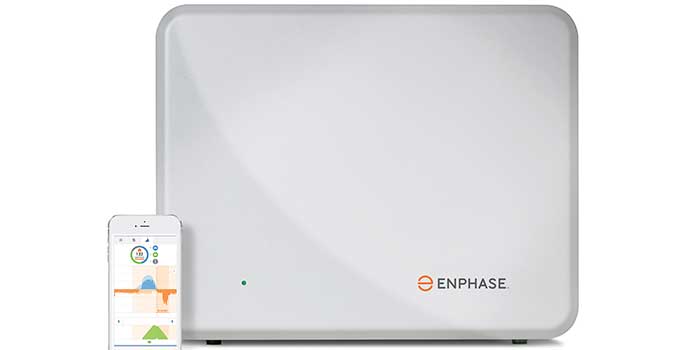
Quick Overview:
- Upfront Cost: $2,000 for battery; $3,420 for total installation ($2,394 post-ITC)
- $ per kWh: $0.27 per lifetime kWh
- Capacity: 1.2 kWh
- Warranty: 10 years
Enphase is best known for their microinverters, but with their AC Battery, they’re moving away from manufacturing a single piece of the solar PV system to an entire renewable energy ecosystem: microinverter, storage, and monitoring.
Their AC Battery uses high-efficiency, non-toxic lithium-ferro-phosphate (LiFePo) technology, a type of lithium-ion technology common in energy storage devices. Despite LiFePo being extremely lightweight (the entire kit weighs about 50 pounds and can easily be installed on the wall) and quick to charge, you’re also able to use 100% of the electricity the battery stores.
Compare this to the standard lead-acid battery that you can only discharge down to 50% of the total capacity, and you immediately see the benefits. Lighter weight and more usable electricity.
On top of that, LiFePo batteries are incredibly long-lasting. Enphase warranties their own batteries with an exceptional 10-year replacement. They also guarantee they’ll still produce 80% of their nameplate capacity at the end of that period (or 7300 cycles, whichever comes first).
We’ve all had those annoying moments when our phone’s lithium battery starts to lose capacity, so having a long-term warranty protecting against this natural loss of power certainly provides a sense of relief.
At 96% efficiency – meaning 96% of all the electricity that is put into the battery comes out the other end, Enphase’s AC Battery is extremely efficient. Compared to other AC-coupled batteries, this is quite good. Even the Tesla Powerwall is only 89% efficient!
Despite all these benefits though, the battery still only comes in at a dainty 1.2 kWh. As such, it’s not really designed for back-up storage. It’s simply too small. Instead, the AC battery stores a small amount of electricity to use later in the day to help lower your utility bills (more on this later). If 1.2 kWh isn’t enough for you, their modular design allows you to add more as you go along – opening up their versatility a bit.
However, at $2,000 is it really worth the cost?
What’s an AC battery?
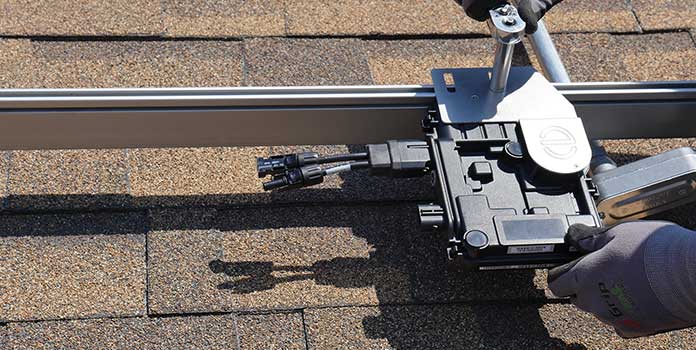
An Enphase microinverter installed under a solar panel
Batteries can only store electricity as direct current (or DC). Solar panels also produce DC electricity, so that makes the two pretty easy to pair together. Our homes on the other hand, use alternating current (or AC). As such, all solar installations need an inverter that converts that DC electricity coming from the solar panels to AC electricity our homes can use.
Enphase’s AC Battery is an all-in-one energy storage system that simply connects to your home’s AC wiring. And indeed, Enphase markets the AC Battery as a simple, easy-to-install energy storage system.
On the inside though, it’s anything but simple. If you opened up the AC Battery, you’d find a wealth of components inside. Beyond just the battery, there’s also an Enphase microinverter to convert the DC electricity to AC, a battery management unit, a communications controller, and safety disconnects.
So, while we use the term ‘battery’ to describe the Enphase battery, it’s really a box containing not only batteries, but also a small inverter, and a few other necessary components.
Enphase has done a great job of boxing up all this overwhelming tech, as the AC Battery is shockingly simple from the homeowner’s perspective. To us laypeople, it’s just a box that holds electricity.
What’s the Enphase battery good for?
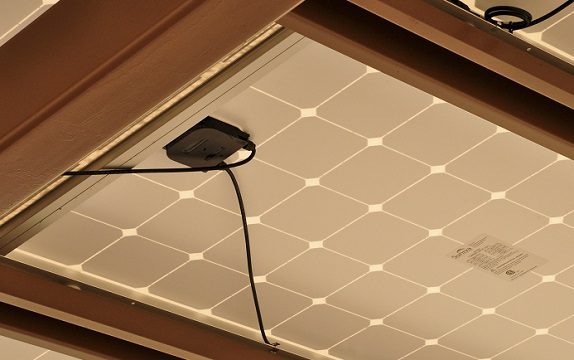
This battery isn’t marketed as an off-grid energy storage system, or even as backup power. At 1.2 kWh of capacity, you’re looking at a SMALL storage system, designed to cover only a portion of your daily energy use.
The average home, for example, uses about 30kWh of electricity each day, so there’s no way you could cover your entire home’s electricity use with a single Enphase battery.
Instead, the AC Battery is designed to save you money by storing a small amount of cheap electricity (either from your solar installation or from the utility during times when prices are low), then using that electricity when prices are high.
If this system sounds familiar to you, you’re probably on a Time-Of-Use rate or other time-variant plan with your utility. With TOU rates, you pay more for electricity when demand is high (typically in afternoon when everyone gets home from work). The Enphase battery allows you to save cheap electricity, either via the utility at night or from your solar installation when it’s pumping out electricity mid-day, then use that electricity later when prices are sky-high.
Can the Enphase AC Battery work with any solar installation?
In a word: yes.
The AC Battery must be paired with the Enphase Envoy-S Metered controller (the –S designates it’s ready for the AC Battery) to work properly. The Envoy-S monitors your energy use and production, and helps moderate exactly when to store and use energy to increase your financial savings.
While having a complete Enphase ecosystem makes installing the battery a cinch, as long as you have the Envoy-S, you can actually add the Enphase AC Battery to any new or existing solar installation. So if you’re interested, there’s no need to tear down your existing solar system if you do not have already have Enphase equipment.
How much does the Enphase battery cost in total?
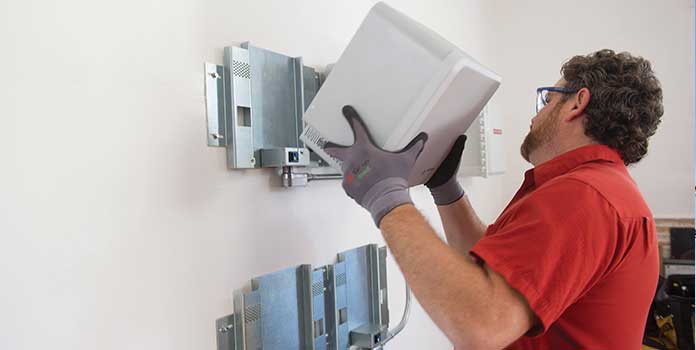
The battery itself costs right around $2,000. Of course, that’s not your total cost. You also need the Envoy-S Metered and an installer to put the whole thing together. GreentechMedia looked into this and estimated the entire cost to come in right around $3,420, breaking down as such:
- Enphase AC Battery: $2,000
- Wall Mount Bracket: $80
- Envoy-S Metered: $600
- Monitoring: $20
- Labor: $720 (which includes design, installation, and configuration)
The federal ITC is also available for energy storage, cutting off a 30% chunk of your total investment. This cuts your total cost to $2,394.
If you live in California, you can also apply for rebates through the state-sponsored Self Generation Incentive Program (SGIP), which is currently in Step 2 of its 5 step incentive system, offering $0.45 per watt-hour of battery capacity. For a 1.3 kWh system, that totals $585, bringing your total investment further down to just $1,809.
At 1.3 kWh of capacity, and an estimated life of 7300 cycles, your Enphase battery can store 8,760 kWh of electricity over its entire lifetime (1.3 kWh X 7300 cycles). At $2,394, you’d then be paying $0.27 per lifetime kWh, or $0.21 per lifetime kWh ($1809 / 8760 kWh) with California’s SGIP incentives.
If you live in California, that probably seems like a pretty good deal, but remember that’s only the cost to store the electricity. You need to provide the electricity as well, and that adds cost. Exactly how much depends on the source.
Let’s say you live in sunny southern California and spent $15,500 on a 5.7kW solar installation (the average cost in California, after taking into account the 30% ITC). This installation will generate 7,809 kWh annually for 25 years, equating to $0.09 per kWh (15,500 / 177,583 kWh after taking into account solar panel degradation). Adding in your battery costs, you’re paying a total of $0.30 per kWh for your stored solar electricity.
So is that a good deal? To a large degree, it depends on where you live.
Is the Enphase AC battery cost-effective?
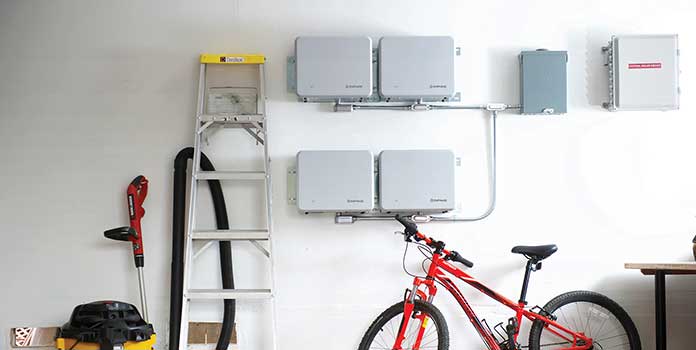
In most states, the Enphase battery just doesn’t make financial sense. As of March 2018, the average utility across the US charges just $0.13 per kWh. If that doesn’t sound like a whole lot, you’d be right. Electricity in much of the US is cheap. Really cheap.
However, some states suffer from much higher electricity rates than others, and these states – notably states like California, New York, and Hawaii – offer fertile ground for financial savings from energy storage.
Consider Southern California Edison’s current TOU rates, wherein on weekdays homeowners pay:
- $0.28/kWh from 8AM – 2PM and 8PM to 10PM
- $0.48/kWh from 2PM – 8PM
- $0.12/kWh from 10PM – 8AM
California has some of the highest electricity prices in the country. In a situation like this, an Enphase AC Battery might make sense as you can avoid those extremely high electricity prices ($0.48/kWh!)in the mid-afternoon.
As we found earlier, your total solar energy production + storage costs equals $0.30 per kWh. That’s a pretty good deal when you consider you would be paying $0.48 per kWh during those high-priced afternoons if you didn’t have any solar/storage installed. From this perspective, seems like a great deal, right? That’s $0.18 less than the utility!
Unfortunately though, that’s only part of the story. Remember that you can only store 1.3 kWh of electricity – that’s not a lot of electricity. If you completely drain your battery storage each day during the highest-priced period (when prices are $0.48/kWh), you’d save $0.23 per day, or about $85/year (though in actuality, it would be less, as utility rates are lower on weekends).
At this rate, it would take you 21 years to recoup your initial investment of $1,809. That’s 2x longer than the AC Battery warranty itself!
And, if you didn’t pair the battery with a solar installation and instead stored electricity at night when electricity prices are lowest ($0.12/kWh), you’d only save $0.18 per day, needing 27 years to see a return on your investment. We don’t know about you, but that’s a bit too long of a wait for us.
So, is the Enphase battery worth it at this moment? Probably not. However, as utility prices creep up and battery prices continue to fall, there will certainly be a turning point where energy storage is cost-effective. We’re getting to that point, but we’re not quite there yet. And it’s not just Enphase’s battery that suffers from high cost. You’re going to come across the same issues with almost any battery out there right now.
To put it simply: batteries still ain’t cheap yet. But it’ll come. For sure, it’ll come.
Do you agree with our assessment on the financials of the Enphase AC Battery? Let us know in the comments.
Want to learn more about energy storage? Read our Tesla Powerwall review!
Interested in installing your own solar installation (which unlike battery storage, is proven to save you money)? Reach out to a few installers for estimates!
Image Credits: CC License via Flickr, All Others Courtesy of Enphase Media Room
